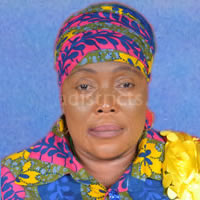Education:
The Savelugu Municipal Assembly as at 2014 had 97 Early Childhood Development Centers (ECD)- [Kindergarten & Nursery] and constructed 16 more within the medium term period, making the number 113 in 2013. In 2010 there were 92 Primary Schools and 14 more were constructed within the period under review. No new JHS/SHS blocks were constructed within the period 2016 – 2017.
The number of ECDs (KG & Nursery) with permanent structures (standard) increased from 35 in 2014 to 73 in 2015 and those without permanent structures reduced from 62 to 40 in 2017. Primary Schools with permanent structures increased from 53 in 2014 to 96 in 2017 and those without standard structures reduced from 39 in 2014 to 10 in 2017. JHS with standard structures increased from 18 in 2014 to 23 in 2015 and those without reduced from 5 to 0 in 2017.
The Pupil/Teacher Ratio (PTR) at ECD for both public and private schools in the Municipality was 1:48 in 2014 and the Pupil Trained Teacher Ratio (PTTR) for the same year was 1:581. The PTR reduced to 1:47, 1:44: in 2014, 2015 respectively and then increased to 1:47 in 2017. The PTTR on the other hand reduced to 269, 140, and 88 in 2014, 2015, and 2017 respectively.
In 2014 the PTR for Primary School was 1:24. The PTR increased to 1:29 in 2015 and remained the same in 2017. It however, increased again to 1:32 in 2014. The PTTR on the hand was 1:73 in 2010 and increased to 79 in 2014. It however, reduced to 1:60 in 2017 and remained the same in 2013.
The JHS had a PTR of 1:16 in 2014 and this increased to 1:25 in 2015, reduced to 1:22 in 2016 and then increased to 1:24 in 2073. The PTTR was however, 1:26 in 2014, 1:35 in 2015, 1:29 in 2016 and 1:28 in 2017.
The Gross Primary School enrolment rates (GER) for boys and girls in 2013/2014 were 92.5% and 72.6%. The GER for boys reduced to 91.2% in 2014/2015 increased to 96.9% in 2015/2016 and SAVELUGU NANTON MUNICIPAL MEDIUM TERM DEVELOPMENT PLAN FOR 2018-2021 Page 87 then fell to 89.8% in 2016/2017. The trend for the girls was not different from that of the boys. The GER reduced to 70.7% in 2014/2015, increased to 77.1% in 2015/2016 and then reduced to 71.8% in 2016/2017.
The JHS completion rate for boys and girls in 2014 were 73.2% and 52.4%. The completion rate for boys went up to 88.3% in 2015 and reduced to 75% in 2017. It however, increased astronomically to 96.2%. The completion rate for girls also increased to 69.1% in 2014, reduced to 61% and then increased to 75.4%. The overall JHS completion rate was 87.3%.
The transition rate from KG to Primary for both boys and girls increased from 2014/2015 to 2015/2016. Except in 2016/2017 where the transition rate for boys (94.1%) was higher than that of girls (86.1%), the rates for girls in 2014/2015 – 2015/2016 was higher than that of boys. In 2014/2015, 47.5% girls and 41.5% boys transited to Primary School from KG. That of girls increased to 60.5% in 2014/2015 and further increased to 77.1% in 2015/2016. The rate for boys increased to 45.8% in 2014/2015 and to 50.6% in 2015/2016. However, the transition rate from Primary to JHS witnessed higher rates for boys than girls and rates for both boys and girls falling in 2016/2017. In 2014/2015 the rates for boys and girls were 76.1% and 71.5%. The rates for boys increased to 82.6%, 89.7% in 2014/2015 and 2014/.2015 and then reduced to 77.4% in 2015/2016. The rates for girls also increased to 72.5% and 73.5% in 2014/2015 and 2015/2062 and then reduced to 69.9% in 2016/2017 academic year.
The percentage of JHS students qualifying for SHS (Aggregate 30 and below) was abysmal during the medium term period. From 36.3% in 2014 the performance fell drastically to 9.7% in 2015. The Municipality was adjudged last in the entire Ghana. The performance for boys in 2014/2015 was 40.2% and it fell to 24.4% in 2015/2016 and increased slightly to 25.7% in 2016/2017 and then fell to 12.2% in 2016/2017. The performance of girls in 2014/2015 was 28% and this fell to 16.7% in 2015/2016, 16.6% in 2016/2017 and 5% in 2012/2013.
The Gender Parity Index (GPI) for ECD in 2014/2015 was 0.93. This fell to 0.85 in 2014/2015, increased slightly to 0.86 in 2015/20116 and again increased to 0.93 in 2016/2017.
The GPI at the Primary level was 0.78 in 2014/2015, remained the same in 2015/2016 and increased by 0.02 to 0.80 in 2016/2017 and then remained the same in 2017/2018.
At the JHS level, the GPI was 0.76 in 2014/2015, increased to 0.79 in 2015/2016, 0.82 in 2016/2017 and then fell to 0.71 in 2016/2017.
At the SHS level, the GPI increased from 0.71 in 2014/2015 to 0.79 in 2015/2016 and then fell to 0.78 in 2016/2017. This increased to 0.85 in 2016/2017 academic year.
Date Created : 11/18/2017 8:12:16 AM





 facebook
facebook X (twitter)
X (twitter) Youtube
Youtube +233 593 831 280
+233 593 831 280 0800 430 430
0800 430 430 GPS: GE-231-4383
GPS: GE-231-4383 info@ghanadistricts.com
info@ghanadistricts.com Box GP1044, Accra, Ghana
Box GP1044, Accra, Ghana